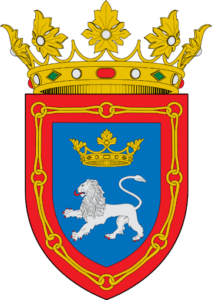PAMPLONA
Department

Flag of the city
The flag of the city is red, white, and yellow. These colors are a representation of the city’s value, beliefs, and heritage.residents.


Slogan of the city
Pamplona does not have a specific slogan but it is known as the “Mitrated City”, because the Archdiocese of Nueva Pamplona was established there, the first Catholic diocese in the northeastern region of the country
History

Pamplona, founded on November 1, 1549, traces its roots to the efforts of Pedro de Ursúa and Captain Ortún Velázquez de Velasco. Bestowed with the name “Pamplona de Indias,” the city, nestled in the Valley of the Holy Spirit, received its title of “Very noble and noble city” from King Charles I of Spain on August 3, 1555. This picturesque city, cradled by the Pamplonita River, was initially divided into 136 plots for its founders. The valley, embraced by the Eastern Cordillera, became home to various indigenous groups like the Chitareros, Muiscas, Cacheguas, Suratáes, Uchamas, Babichas, and more. The first mayors, Alonso de Escobar and Juan Vasques, alongside councilors such as Juan de Alvear and Sancho de Villanueva, undertook the governance of Pamplona. The city played a pivotal role in subsequent expeditions that led to the founding of towns like Mérida, San Cristóbal, La Grita in Venezuela, and Ocaña, Salazar de Las Palmas, Chinácota, San Faustino, Bucaramanga, and San José de Cúcuta in Colombia. The inhabitants of the Pamplona province were dubbed “chitareros” by the Spanish due to their custom of carrying a calabash or totuma filled with chicha (corn wine) tied to their waists. Following the Spanish occupation in 1549, the settlers were subjected to the encomienda regime, with around 100 groups distributed into 53 encomiendas across the territory. A significant earthquake struck Pamplona on January 16, 1644, causing devastation. Under the guidance of the Jesuit brothers, the resilient city rose again from the ruins, showcasing its enduring spirit.
Geography of the city
Pamplona is situated at coordinates 72°39′ west longitude of Greenwich and 7°23′ north latitude, standing at an elevation of 2200 meters above sea level. It shares borders with Pamplonita and Cucutilla to the north, Cácota and Mutiscua to the south, Labateca to the east, and Cucutilla to the west. The total extension of the city is 456 km. The city is administratively divided into 2 townships and 30 paths. It boasts two significant rivers, Pamplonita and Sulasquilla, along with their respective tributaries: El Alisal, La Ramada, Quelpa, San Agustín, Monteadentro, and La Lejía. Pamplona comprises various villages, including Cariongo, Alto Grande, Caima, Alizal, Santa Ana, El Rosal, Ulagá, Fontibón, Monteadentro, El Zarzal, Navarro, San Agustín, Chínchipa, Chilagaula, Peñas, Cúnuba, Tampaqueba, Iscaligua, Cimitarigua, García, Chíchira, Jurado, Escorial, Sabaneta, El Palchal, Llano Castro, Tencalá, San Francisco, Sabagúa, and Alcaparral. Situated on the Eastern mountain range, Pamplona rests at the fork of the significant Nudo de Santurbán. This region divides into two branches, with one heading northeast towards Venezuelan territory and the other northwest to form the Motilones mountain range. The Province of Pamplona encompasses municipalities surrounding Pamplona, such as Pamplonita, Chitagá, Silos, Cácota, and Mutiscua. The central hub is 75 km away from Cúcuta, making it the fifth-largest city in the Norte de Santander department.

Population
Total 59,422 inhabitants (2020)
Urban 55,366 inhabitants (2020)
One photo representative of the city

Etymology
The name “Pamplona” holds historical significance as it was given to honor the Spanish city of Pamplona. The city of Pamplona in Colombia was founded on November 1, 1549, by Captain Francisco Fernández de Contreras. King Charles I of Spain granted it the title of “Very noble and noble city” on August 3, 1555, through a Royal Decree. The choice of the name reflects a homage and memory of the Spanish city of Pamplona.
What the city is known or famous for
Pamplona, Colombia, is known for its historical significance, charming beauty, and cultural heritage. Founded in 1549, the city has played a crucial role in the region’s history. Pamplona is renowned for being the first Catholic diocese in the northeastern part of Colombia. Its historical importance is further highlighted by the Convention of Ocaña in 1828, an event that attempted to reform Gran Colombia’s constitution. The region’s topography is influenced by the Eastern mountain range, with Pamplona located at the fork of the Nudo de Santurbán. The province of Pamplona, consisting of surrounding municipalities such as Pamplonita, Chitagá, Silos, Cácota, and Mutiscua, forms a small conurbation. This province, with Pamplona at its core, is recognized for its unique geographical setting, including the Motilones mountain range. In addition to its historical and geographical significance, Pamplona is celebrated for its charming villages and townships, each contributing to the cultural mosaic of the region. The townships, including Cariongo, Alto Grande, Caima, and others, add to the cultural richness and diversity of the municipality. Overall, Pamplona is a city known for its historical legacy, geographical beauty, and cultural contributions to the northeastern region of Colombia.

